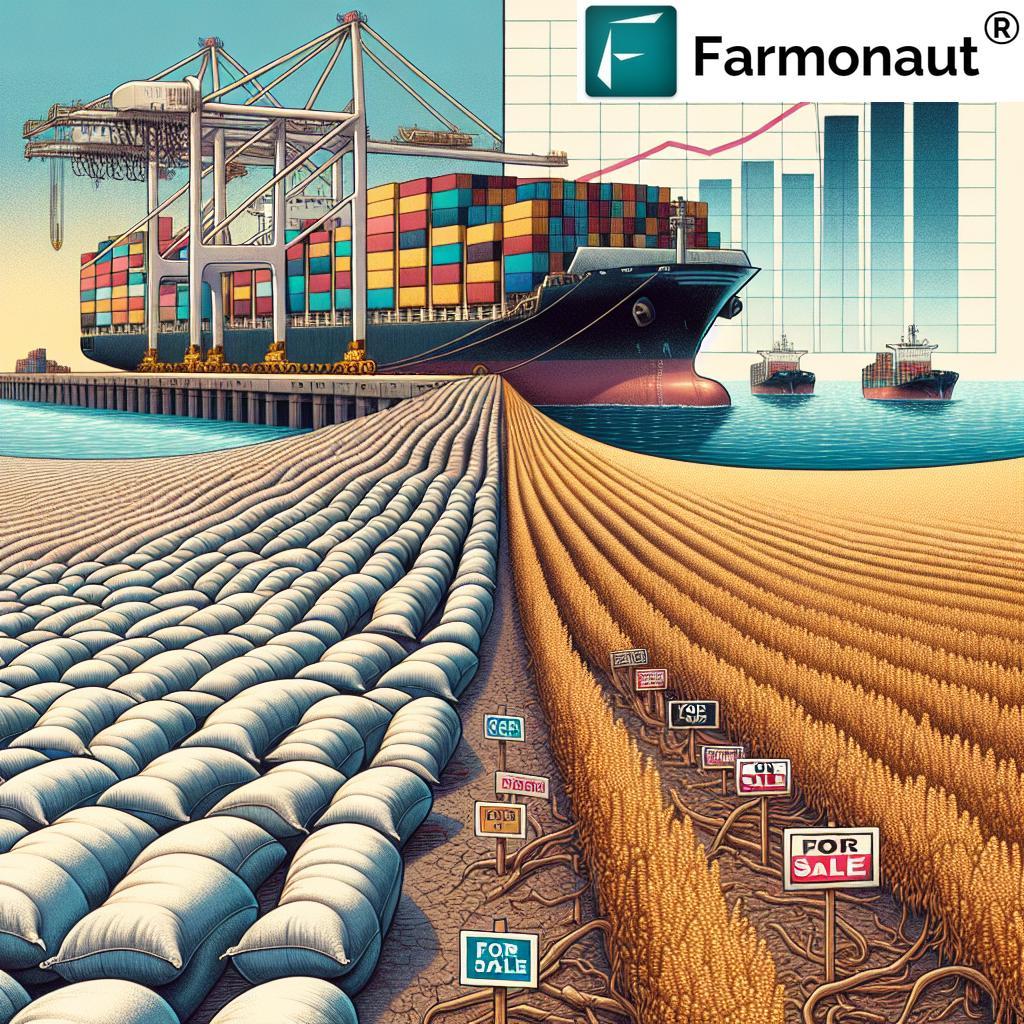Despite ongoing trade tensions between the United States adn China, American farm equipment sales have shown resilience in recent quarters. The agricultural machinery sector, which initially braced for significant downturn amid tariff disputes and market uncertainties, has managed to navigate through the challenging trade environment. This development comes as farmers adapt their purchasing patterns and manufacturers adjust their supply chains to accommodate the new market dynamics. Despite ongoing trade tensions and market uncertainties, the American agricultural equipment sector has demonstrated remarkable resilience. Recent industry data reveals that sales of tractors and harvesting machinery maintained steady growth throughout the challenging period, defying initial predictions of severe market contraction.Statistical analysis shows that mid-range tractor sales increased by 6.2% compared to previous year figures, while high-horsepower equipment purchases remained stable with only a marginal decline of 0.8%. This performance indicates that farmers are adapting their investment strategies rather than completely halting equipment upgrades.
Agricultural equipment manufacturers have implemented strategic measures to mitigate the impact of increased steel and aluminum costs resulting from tariffs. Companies like John Deere and Case IH have optimized their supply chains and introduced flexible pricing models to maintain competitive market positions.These adaptations have helped shield both manufacturers and end-users from the full brunt of trade-related cost increases.
Regional sales patterns highlight varying degrees of market adjustment across the contry. midwest dealers report stronger than expected sales, especially in states with diverse crop portfolios. The Plains states have seen moderate activity, while coastal regions demonstrate more cautious purchasing behaviors.
Farm equipment financing has played a crucial role in sustaining sales momentum.Financial institutions have introduced specialized lending programs with competitive terms, helping farmers manage cash flow while upgrading their machinery. This financial versatility has been particularly vital for medium-sized operations seeking to maintain operational efficiency.
Technological integration continues to drive equipment sales, with precision agriculture features becoming standard offerings. Farmers are increasingly prioritizing machines equipped with GPS guidance, yield monitoring, and automated systems, viewing these investments as essential for long-term competitiveness rather than optional upgrades.
Used equipment markets have also shown strength, serving as a viable option for operations seeking to balance modernization with fiscal prudence. Certified pre-owned programs have gained traction, offering warranties and technological updates for previously owned machinery.
The parts and service segment has experienced notable growth, reflecting a trend toward maintaining existing equipment alongside selective new purchases. Dealerships report increased demand for maintenance services and component upgrades, indicating a pragmatic approach to fleet management.
Looking at specific equipment categories, compact tractors and specialized implements have outperformed broader market trends. This suggests a shift toward optimized equipment solutions rather than wholesale fleet replacements, particularly among smaller and diversified farming operations.
Manufacturing facilities have adjusted production schedules and inventory management to align with evolving market demands. This operational flexibility has helped maintain stable pricing structures while ensuring adequate equipment availability across different regional markets.
Industry analysts note that these adaptations have positioned the sector for sustained stability, even as trade negotiations continue to influence market conditions. the demonstrated resilience suggests that the agricultural equipment industry has developed effective strategies to navigate complex economic challenges while meeting evolving farmer needs.









